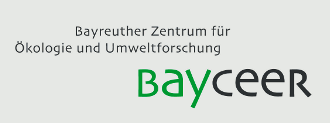Partitioning of atmospheric carbon dioxide fluxes into ecosystem carbon pools by coupling stable isotope labeling and eddy covariance
2 Department of Soil Science of Temperate Ecosystems, University of Göttingen, 37077 Göttingen, Germany
O 3.2 in Ökosysteme: Funktion und Leistungen
11.10.2012, 11:45-12:00, H8
The complexity of ecosystem processes, especially under continuously changing environmental conditions, requires high resolution insight into ecosystem carbon (C) fluxes. It is essential to gain not only information about relative C balance and fluxes (common for partitioning studies), but also in absolute mass units. To evaluate absolute fluxes in belowground C pools, eddy covariance and stable isotope labeling were coupled for the first time. Eddy covariance based net ecosystem exchange was therefore measured on an extensively managed grassland (research site Voitsumra, project FORKAST) and separated into underlying assimilation (GPP) and ecosystem respiration (RECO) by a C flux partitioning model, validated by chamber measurements. The resulting CO2 assimilation served as absolute C input into the ecosystem that was further partitioned by applying the relative C distribution in subsidiary pools, gained from a 13C pulse labeling field experiment. In doing so, the mean daily assimilation of 7.1 g C m-2 d-1 was partitioned into fluxes of 2.5, 0.8, 0.5, 2.3 and 1.0 g C m-2 d-1 into shoots, roots, soil, shoot respiration and CO2 efflux from soil, respectively. Finally, it was concluded that the approach is suitable as an upgrade for both atmospheric flux measurements and isotopic partitioning methods.
Export as iCal:


